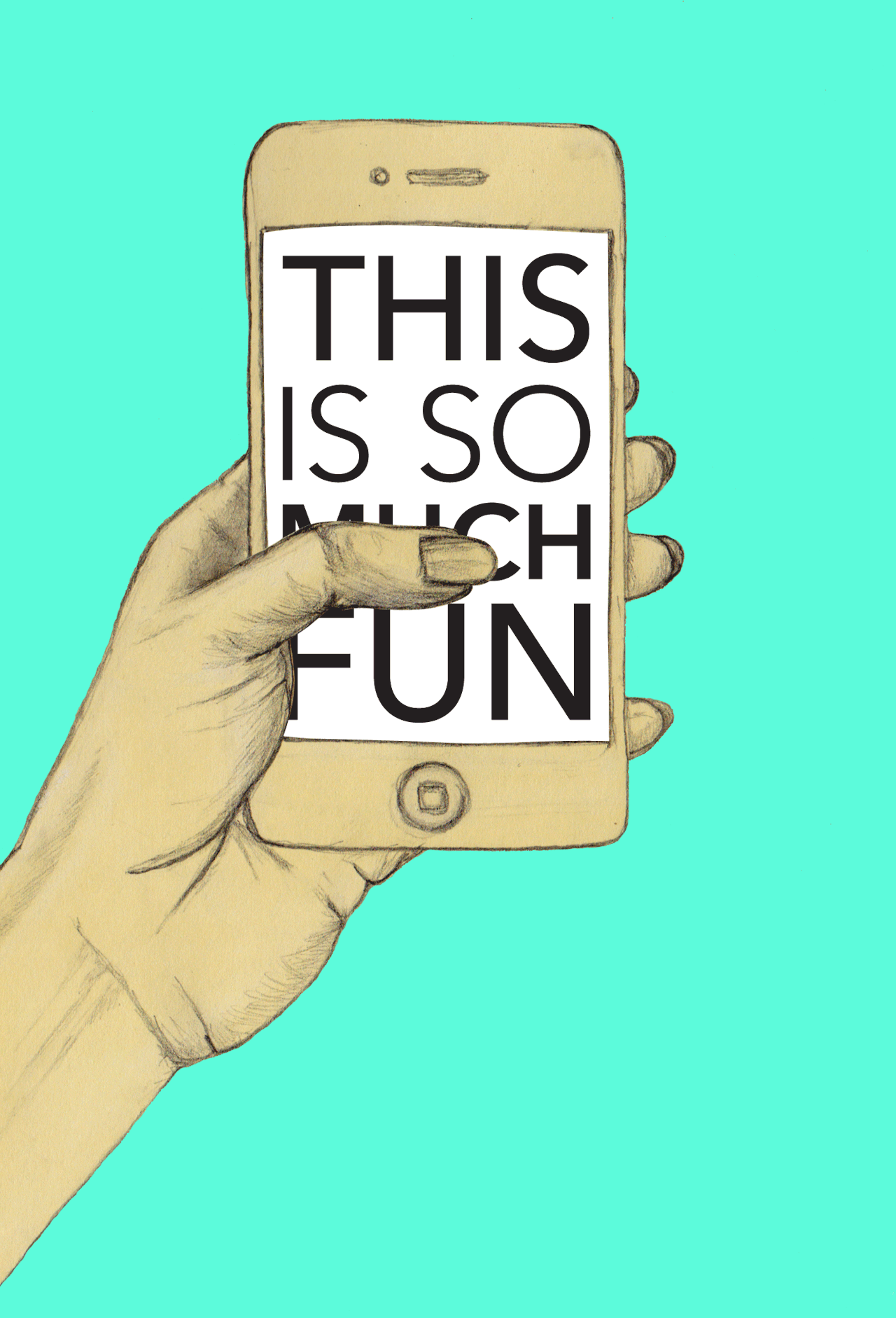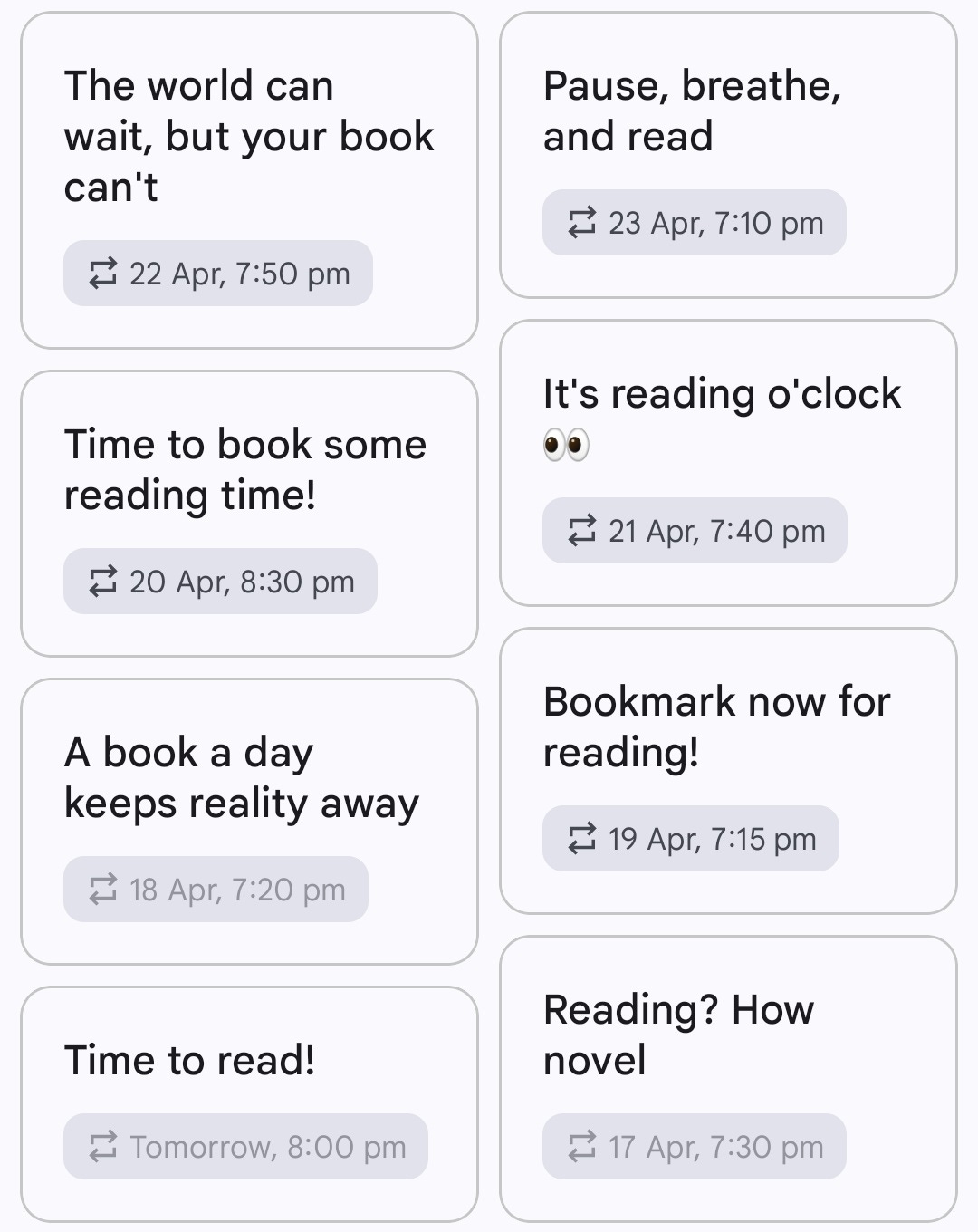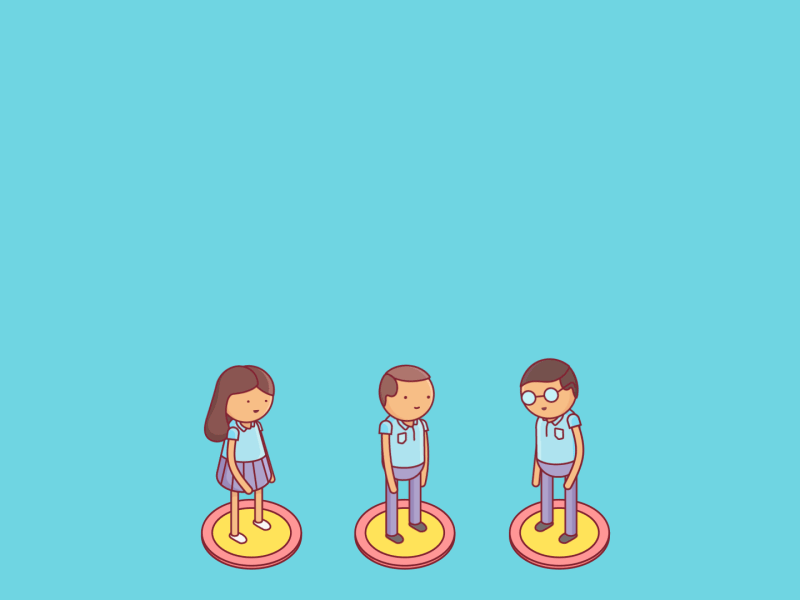I don’t like social media. Sure it has its uses, in enabling me to keep in contact with family and friends across the world, and sure it’s occasionally filled with photos of kittens and puppies and whatnot, but I still don’t like it. I don’t like the fact that I can doom-scroll for hours, or that I do so on far too regular a basis. I don’t think anyone does, and so this presumably isn’t shocking news.
What I do like though, is reading. Not memes and status updates, but stories. Yet no matter how much I enjoy it, I never seem to find the time to read, but I always have too much time for social media.
I know that social media companies have put a lot of effort and research into making their apps as addictive as possible, to hold user engagement. I also know that I am susceptible to the tactics they have used, as evidenced by my sheer amount of social media usage.
So why not try apply the same tactics that have worked so well on me, to reading? Can I make reading books as addictive as social media?
There are a few methods that companies use that I focused on to emulate for my experiment. They are; endless scrolling, push notifications, and social comparison.
 As the name suggests, endless scrolling is an interaction design pattern, where content loads as the person scrolls without interruption. Most ebook apps use pagination, where the person flips the pages just like they would with a physical book. Flipping to the next page uses more effort than scrolling down slightly, and it also gives you a natural point in the process to decide to stop reading and do something else. By switching to an infinite scroll model, it requires much less energy to view the next part of content, and as there’s no ‘checkpoint’ where you stop momentarily, you are much more likely to continue passively consuming the content.
To enable this for my reading, I switched from the app I was using to use Kindle, which has inbuilt settings to allow for the endless scroll.
As the name suggests, endless scrolling is an interaction design pattern, where content loads as the person scrolls without interruption. Most ebook apps use pagination, where the person flips the pages just like they would with a physical book. Flipping to the next page uses more effort than scrolling down slightly, and it also gives you a natural point in the process to decide to stop reading and do something else. By switching to an infinite scroll model, it requires much less energy to view the next part of content, and as there’s no ‘checkpoint’ where you stop momentarily, you are much more likely to continue passively consuming the content.
To enable this for my reading, I switched from the app I was using to use Kindle, which has inbuilt settings to allow for the endless scroll.

Spend any time near a modern phone, and you’ll know everything you need about push notifications. Multiple studies have demonstrated the effectiveness of push notifications in regards to user engagement and retention. According to the Center for Humane Technology, “Notifications (vibrations, red dots, flashing lights, banners) constantly trigger the salience network, effectively fooling us that something new but trivial is urgent.” If you want to make notifications even more effective, they should also include an element of novelty. Novelty in activity results in several impacts on the brain, and the most valuable impact in this context is that it can induce a release of dopamine, aka the “feel-good” hormone. To replicate this for reading, I used a reminder app (Google Keep) to send me a variety of different notifications at varying times.

Humans are social animals. We thrive because of connection and cooperation. We also thrive by comparison, as we evaluate our traits and abilities by contrasting ourselves with our peers. Social media allows us to overload on a distorted and over-sanitized version of this, as we can use it to compare ourselves with the very best achievements of every person we have ever met (resulting in impacted levels of self-esteem, to the surprise of no one). To apply social comparison to reading, all you need is to sign up to a website such as Goodreads or StoryGraph. In both sites, users can record which books they have read before, are reading currently, what they thought of them, what they want to read next, and how many books they have read this year so far. More importantly, you can then connect with others and see what they read, what they rate, and compare just how much more they have read than you so far this year.
Endless Scrolling
 As the name suggests, endless scrolling is an interaction design pattern, where content loads as the person scrolls without interruption. Most ebook apps use pagination, where the person flips the pages just like they would with a physical book. Flipping to the next page uses more effort than scrolling down slightly, and it also gives you a natural point in the process to decide to stop reading and do something else. By switching to an infinite scroll model, it requires much less energy to view the next part of content, and as there’s no ‘checkpoint’ where you stop momentarily, you are much more likely to continue passively consuming the content.
To enable this for my reading, I switched from the app I was using to use Kindle, which has inbuilt settings to allow for the endless scroll.
As the name suggests, endless scrolling is an interaction design pattern, where content loads as the person scrolls without interruption. Most ebook apps use pagination, where the person flips the pages just like they would with a physical book. Flipping to the next page uses more effort than scrolling down slightly, and it also gives you a natural point in the process to decide to stop reading and do something else. By switching to an infinite scroll model, it requires much less energy to view the next part of content, and as there’s no ‘checkpoint’ where you stop momentarily, you are much more likely to continue passively consuming the content.
To enable this for my reading, I switched from the app I was using to use Kindle, which has inbuilt settings to allow for the endless scroll.
Push Notifications

Spend any time near a modern phone, and you’ll know everything you need about push notifications. Multiple studies have demonstrated the effectiveness of push notifications in regards to user engagement and retention. According to the Center for Humane Technology, “Notifications (vibrations, red dots, flashing lights, banners) constantly trigger the salience network, effectively fooling us that something new but trivial is urgent.” If you want to make notifications even more effective, they should also include an element of novelty. Novelty in activity results in several impacts on the brain, and the most valuable impact in this context is that it can induce a release of dopamine, aka the “feel-good” hormone. To replicate this for reading, I used a reminder app (Google Keep) to send me a variety of different notifications at varying times.

Social Comparison

Humans are social animals. We thrive because of connection and cooperation. We also thrive by comparison, as we evaluate our traits and abilities by contrasting ourselves with our peers. Social media allows us to overload on a distorted and over-sanitized version of this, as we can use it to compare ourselves with the very best achievements of every person we have ever met (resulting in impacted levels of self-esteem, to the surprise of no one). To apply social comparison to reading, all you need is to sign up to a website such as Goodreads or StoryGraph. In both sites, users can record which books they have read before, are reading currently, what they thought of them, what they want to read next, and how many books they have read this year so far. More importantly, you can then connect with others and see what they read, what they rate, and compare just how much more they have read than you so far this year.